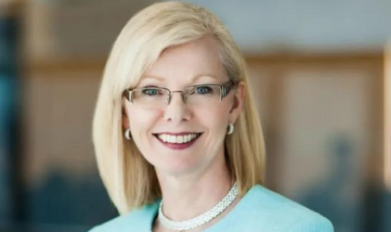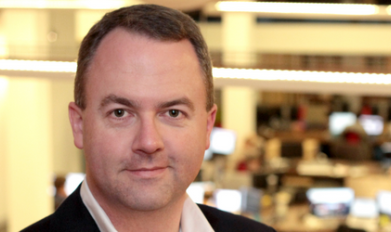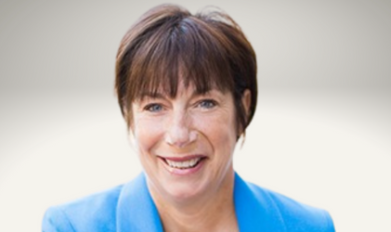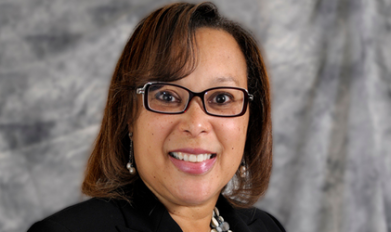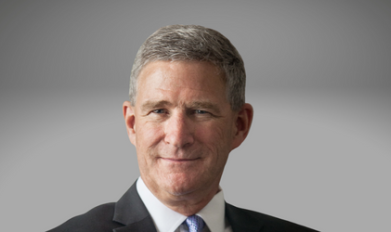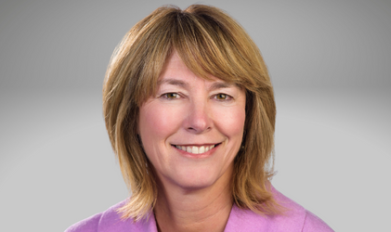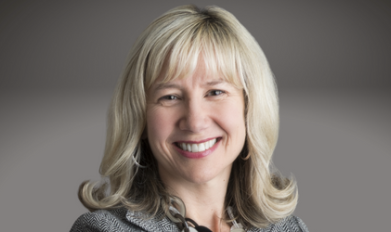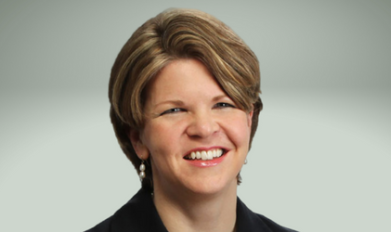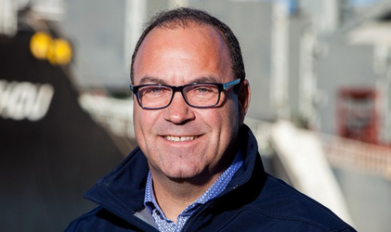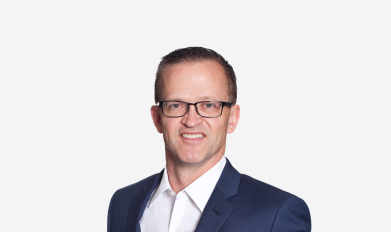Enhancing Atlantic Canada’s economy through the strengthening of our workforce
In January 2020, Kevin Stoddart interviewed Doug Jones, President and CEO of WorkSafeNB, the organization charged with overseeing the implementation and application of the province’s Occupational Health and Safety (OHS) Act and the Workers’ Compensation Act. Together, they explore how Atlantic Canada can become more globally competitive and strengthen our economic outlook.
Over the past 20 years in public and private-sector leadership roles, including Canada Post, the City of Edmonton, and Lafarge North America, Jones has demonstrated a commitment to safety that includes prevention, rehabilitation, and fair compensation for injured workers. He shares his thoughts on the shifting concept of safety in the workplace, the role technology will play in creating an engaged workforce, and how more senior professionals can help address emerging skills gaps.
As the President and CEO of WorkSafeNB, what do you see as the biggest obstacles and opportunities for employers when creating safe and healthy workplaces?
In New Brunswick, the main challenge has been ensuring everyone in the workplace, from the executive level to frontline employees, understands their responsibilities. The duties and obligations of workers, supervisors, and employers weren’t clearly spelled out in the province’s Occupational Health and Safety Act, and the resulting lack of understanding created a gap in the province’s safety culture. The government passed amendments to the OHS Act in December 2019 to make everybody’s responsibility for safety very clear in legislation.
It seems communication was the big issue there.
It was, to a degree, because we did not add any new responsibilities to the act. The biggest issue was that we needed to clarify what was already in place. In delivering this clarity, we are seeing more engagement, particularly at the supervisory level, and more requests for training. I think that puts our province on the path to significantly reducing, or better yet eliminating, accidents in the workplace.
What stakeholder collaboration do you see as vital in achieving a culture of workplace safety excellence?
Our key stakeholders have traditionally been employees, employers, labour groups, and the government. We’ve been grateful for the broad support by all stakeholders in getting legislation passed recently. What we want to do now is to achieve more buy-in among employers by positioning safety as an investment in their bottom line. There is still a mindset among some that safety is a cost, but when you invest in safety, you not only experience fewer workplace injuries but also generally benefit with better employee relations, fewer sick days, enhanced motivation, and improved productivity.
We are also looking to engage employees more, not just on what they should be doing to advance a safety culture, but also to increase awareness about their rights. We would like to see a culture in which people look at everything they do to assess the risk involved, both on the job and in their daily lives. Right now, that’s not a habit that is ingrained in all of us, particularly outside of the workplace, unless there’s a structured program in place that includes daily meetings, job risk assessments, and workplace hazard assessments.
One underappreciated stakeholder group that has been proven to drive positive safety behavioural change is the family. We are working hard to connect our safety message with the spouses, significant others, parents, and children of employees. None of them ever want to experience the profound impact that a tragic accident can have on a worker and their family, and a worker’s family has a unique power of persuasion that we can’t match. This insight inspired our recent advertising campaign focused on the message that “Workplace Injuries Hurt the Most at Home.”
I don’t know if we can consider the media as stakeholders in the truest sense, but they certainly play an important role in helping to create a culture of workplace safety, so that is another avenue for us to explore as we raise awareness on this topic.
Do you find that safe and healthy workplaces are being embraced to a greater degree than ever before?
While I am seeing significant improvement in some areas and incremental improvement overall, there’s still a long way to go. It’s interesting to see how the whole concept of safe workplaces is evolving. Traditionally, for many people, safety referred to protection against a physical injury or exposure to dangerous chemicals, for example. But there is growing appreciation that safety in the workplace must also address issues such as drug impairment, violence, harassment, mental wellness, and the like. That opens a whole new world of hazards that need a very different skill set to manage.
That’s a challenging pursuit given that it isn’t always easy to spot or detect those hazards.
That is true. Supervisors and managers aren’t necessarily trained in how to recognize these issues or offer help. Too often when faced with these kinds of hazards, the necessary action to resolve the issue is unintentionally deferred, which can end up making the problem more difficult to resolve.
I believe that it is very important for management and supervisors to fully embrace employee engagement on an individual basis. Not just having perfunctory conversations but also working to establish a level of mutual trust so that you develop an understanding of some of the important things that are going on in your employees’ lives. In doing so, you achieve a level of awareness that enables you to identify potential issues earlier and that provides you with the opportunity to offer the right support at the right time. Regardless, for the next few years it’s likely going to be very challenging to fully address issues such as mental wellness or post-traumatic stress in the workplace until we remove the stigmas associated with so-called invisible injuries and better train all employees on this subject.
As workplace demographics shift and technologies continue to evolve, how will they potentially impact implementation and practice of workplace health and safety?
It’s going to be easier to achieve adoption from young people entering the workforce because they will consider any new standards to be part of their job. There may be resistance from more established employees because new approaches will clash with the way things traditionally have been done. The key is to look at how you communicate change management. It’s not just about telling people what to do; it’s about taking the time to explain why we’re doing this, what it means to the employee, and so on. We must recognize that different demographics may require different approaches to ensure buy-in.
Technology is also going to be vital in implementation and practice. We are seeing new technologies enter the market, such as guards and sensors that can detect any nearby presence in a dangerous area, but we also have more means for engaging and communicating with people on improving safety, such as smartphone apps and chatbots. Millennials, Gen Xers, and many Baby Boomers are fluent in technologies that make their lives easier or deliver information faster and in more convenient ways. At WorkSafeNB, we need to deliver safety regulations or information through those channels too, so technology is going to help enable our transformation as we adopt a more customer-centric approach.
In your view, how do you believe leaders can make an impact on the health and safety culture of their organization?
There are several ways. Engagement is one, particularly fostering two-way communication. We, as leaders, need to make sure we are not only conveying our plans and inspiring the workforce but also providing a mechanism to encourage innovative ideas, receive constructive feedback, and report safety-related issues of concern without any fear of reprisal. But I believe that the biggest single action a leader can take that will positively impact the health and safety culture in their organization is to become actively engaged in the organization’s safety program.
Leading by example would include actions such as ensuring your organization has a well-functioning joint health and safety committee. It also means reviewing the minutes of safety meetings to ensure that identified risks are being addressed on a timely basis and participating in safety inspections. Finally, it includes holding yourself, as well as management and supervisors, accountable for consistently demonstrating good safety leadership behaviours, not just while at work but, ideally, 24 hours a day, seven days a week.
At WorkSafeNB, we are working to develop a culture of operational excellence—how can we provide strong benefits and high-quality service in the most efficient, effective, and safe way? We’ve created a performance excellence department, which looks at the issues our clients and employees are facing, determines root causes, and acts to address them, whether it is fixing a problem now or opting for a temporary solution that we revisit and work into something permanent when we transform our systems or processes.
Looking ahead, what do you predict will be the defining changes to the workforce and economic landscape of Atlantic Canada over the next five to 10 years?
The biggest changes I see are related to our aging demographic. As our population ages, there are going to be numerous job vacancies, as we won’t have enough young workers available to replace those who retire. I am encouraged by the efforts that the Atlantic provincial governments and the private sector are making to attract more people, because immigration will be essential to our growth and future prosperity.
Even so, it’s not enough to simply attract more skilled newcomers to the region; we need to find ways to retain them. Immigrant families may land here and stay a few years but, unless we work together to help them develop strong ties within our communities, they may not stay. Atlantic Canada is an attractive place to live and raise a family, and we are starting to see growing pockets of newcomers take root here, which is very encouraging. Some of the achievements by newcomers that we have seen in the media in recent months – such as the creation of successful new businesses - are truly remarkable. I am optimistic we can build on this success, attract many more families, and develop the wider pool of talent we need to address the critical skilled labour shortages that we are facing.
A focus on workplace health and safety can also help address this challenge. Safer workplaces are attractive places to work, and a strong focus on safety results in workers remaining injury-free and productive for longer periods. As well, improving workplace health and wellness may provide more opportunities for older workers to stay in the workforce and contribute to an organization’s success beyond the traditional retirement dates.
Do you have any advice for Atlantic Canada’s leaders in handing over the reins to the next generation?
For one, a newly appointed leader has a lot on their plate, so their success depends a lot on how well prepared both the new leader and the organization are for the leadership change. That’s why succession planning and the development of tomorrow’s leaders are crucial considerations for the leaders of today. Succession planning is hard work and takes a great deal of time in order to achieve good results. Far in advance of any anticipated transition, you should be thinking about the candidates that are potentially going to succeed you and how to prepare them for the role. A succession plan must be robust and thoughtful, and it may require difficult decisions as you develop promising talent in different roles across the organization. Challenge them, remove them from their comfort zone, continually evaluate their performance and behaviours, and provide them with the support they need to grow. There is always the possibility of an emergency, of something happening where someone needs to step into a leadership role at any given time, perhaps on an interim basis. If you don’t prepare for that, or for a more permanent transition, you run the risk of putting someone in there who isn’t ready, and your organization will flounder. It can take up to a year, or sometimes longer, to conduct a search to select a new executive leader. By starting early to identify and develop candidates to be strong contenders to fill that role, you will ensure the best outcome for the organization, the new leader, and yourself.
About Atlantic Leader Insights
Atlantic Canada’s economy is fueled by a diverse array of private and public sector entities that employ thousands of people and contribute to our region’s growth and prosperity. But how are these organizations optimizing the potential of their people, and what insights have they gained about the future of our economy from their innovative initiatives?
KBRS recognizes the critical importance of attracting, developing, and retaining inspiring leaders and top talent within Atlantic Canada. We sat down with leaders at several high-impact Atlantic Canadian organizations to talk about our region’s opportunities and challenges. This article is one in a series that aims to collect these leaders’ insights on how we can enhance our economic outlook by strengthening our workforce.
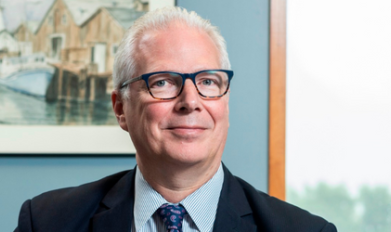
President and Chief Executive Officer, WorkSafeNB 2018 - 2021



